Introduction
The United States of America was a huge wilderness area in the early 18th century and while a few cities along the coast had been populated, the interior parts of the country were largely unknown. Much before the Go The United States of America was a huge wilderness area in the early 18th century The United States of America was a huge wilderness area in the early 18th century ld Rush, a few explorers took upon themselves to explore and map the vast wilderness of interior America and in the process, they created many invaluable maps, found and traced many rivers, found many new species of plants and animals, and let the world know about the vastness of America and the native Indians. Among the explorers, Prince Maximilian of Wied-Neuweid and his accomplice Karl Bodmer the Swiss artist explored the Great Plains and toured the Missouri river. This paper explores the travels of the explorer and discusses his studies of the native Indians.
Brief Biography of Prince Maximilian of Wied-Neuweid
Prince Maximilian Alexander Philipp of Wied was born in Neuwied city of Germany, He was a German naturalist and explorer who undertook a journey through Brazil in 1815 and then the United States from 1832 to 1834. His work on the Indian tribes of Hidatsas and Mandans helped the western world to understand the nature and customs of the plains Indians. Being from a rich royal family, financing the expeditions was not a problem and in that one traveled through sailing ships and on horseback in the country since there were no roads, just mountains and going by carriage was not possible. The prince had joined the Prussian army, as was the custom in those days but he pursued his interest in the study of natural sciences. He also joined the University of Göttingen to study natural science under professor Blumenbach. His passion for natural science and a keen desire to turn into an explorer made him take up an expedition to Brazil. He stayed in Brazil for two years in the Mata Atlantica and studied the local natives such as Pataxo, Purí, and Botocudo and the flora and fauna of the region. The skills of writing field notes and making detailed observations served him well and when he returned to Germany in 1817, he wrote his findings in the form of a two-volume book called “Journey to Brazil in the Years 1815-17” (Noll, 2005).
After writing his book, Maximilian thought of taking up another expedition and considered the Russian regions of Kirgisian Steppe and Labrador but then decided to travel to North America to investigate the native Indians and the flora and fauna that he had heard of. He wanted to compare the customs and traditions of the native North Americans with those of the natives from Brazil. He left Europe in 1932 May along with his friend Karl Bodmer who was an artist and painter from Switzerland. Arriving on the East Coast, he decided to travel west and landed in New Harmony, Indiana where he was struck by Cholera and spent the winter in the frontier post and enjoyed his stay with two other naturalists Charles Alexandre Lesueur and Thomas Say. The Prince departed in 1833 and came to St. Louis and obtained boats from the American Fur Company to travel up Missouri. The Prince traveled along the river, going ashore many times and halted along with forts at Clark Pierre, Union, and others, and finally ended up at Fort McKenzie. He wanted to go still further but there were hostilities reported from some Blackfoot Indian tribes and he spent the rest of his journey studying the native Indian tribes of Hidatsas and Mandans and the Arikaras. The Prince returned to Germany in 1834 and his records created a vivid image of the noble savage and his description of the native customs and traditions fascinated many people throughout Europe. The following image shows a map of his journey (Noll, 2005).
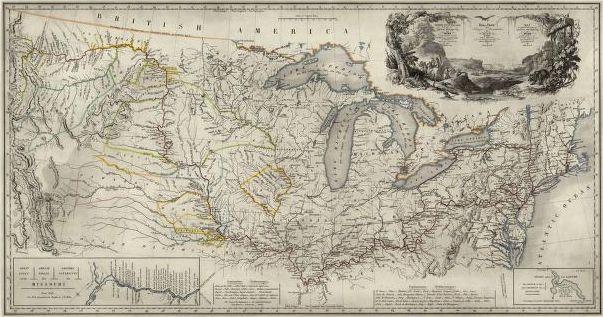
A brief biography of Karl Bodmer
Karl Bodmer was born in 1809 in Zurich Switzerland and had an interest in natural life sciences, He joined Prince Maximilian during his journey to North America in 1832. He and his older brother Rudolf studied with their maternal uncle, Johann Jakob Meyer, a competent artist who trained the young men in drawing, painting, and engraving. After further studies in Paris, Karl joined his brother for a sketching trip through Germany in 1832. While at Coblenz, arrangements were made for Karl to accompany Maximilian on the North American expedition. A contract was signed providing that all drawings and watercolors would be the property of Maximilian except for scenes executed are Bodmer’s leisure-aboard ship, for example. The prince was to furnish round-trip passage money and cover travel expenses in America.
It was specified that no food supplies would be taken, making it necessary for the travelers to accommodate themselves to local American culinary tastes as they moved. Bodmer would be expected to assist in collecting natural history specimens and to share in the hunt. He would receive a cash stipend for each month of the trip but would have to supply his art materials, excluding paper, and furnish his clothing and personal. During those days, photography had yet been invented and the only way to record flora, fauna, scenery, and humans were with the help of an artist. Explorers were men of adventure and painting and drawing skills were beyond many of them and so expeditions usually had artists who would draw quick sketches of any items that had to be recorded for posterity.
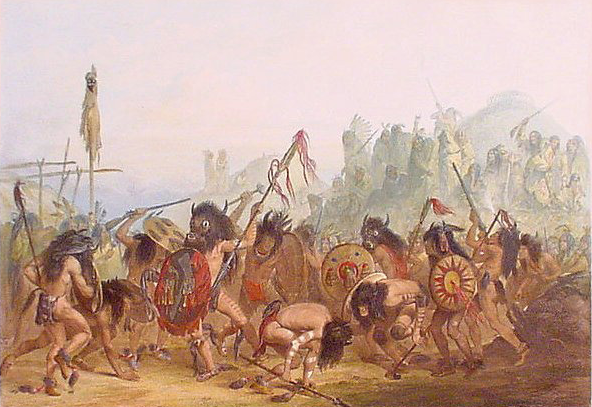
He joined the Prince’s expedition when the artist was around 25 years and is used to long walks in his native country, he adapted well to America. When they landed at New Harmony, the Prince fell ill but Karl was not affected by the Cholera epidemic and when the prince was resting, he made his way to Mount Vernon and spent a few weeks in the company of Joseph Barrabino, another American naturalist. Karl has created some sketches using pencil and canvas and he has created works with charcoal and paintings. His work reflects his keen eye for details and the strong natural postures of the animals and native Indians that he sketched. After returning from the expedition, he went to France and settled down there. He turned his works into 81 aquatint plates that were included in the book by Prince Maximilian.
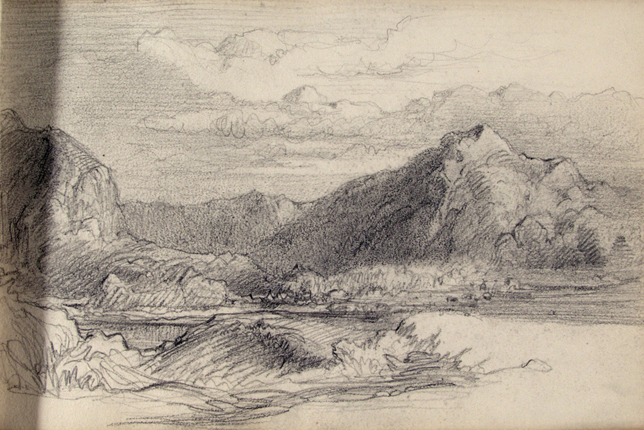
Expeditions of Prince Maximilian
Goetzmann (1994) recounts that while Maximilian had stayed on for two years, the Prince spent the maximum and productive time in Fort McKenzie. One of his goals was to establish the relation between the savage natives of Brazil and the native Indians of America. The explorer discovered that beneath the savage ferocity, lust for blood, violence, the Indians like the Brazilian counterparts had a fine tradition and culture that was filled with customs, traditions, and elaborate ceremonies. The Prince felt that there were great similarities between the slave Negro, the native Indian, and the native Brazilian. All three people had been dominated and exploited by the White man who had brutalized them into submission. The Prince felt that if the evil influence of the white man were removed, then the natives would also appear as intelligent and cultured people. The native Indians did appear savage to the Americans and this was so since the Americans were technologically far superior to the illiterate Indians. However, the Prince felt that if given proper education, these people would appear to be as clever as the whites. The American whites of those days had little interest in Indians and had no time to understand their culture and ceremonies as the whites were only interested in land and expansion. Consequently, very few detailed studies have been done about the ancient culture, rituals, and ceremonies of the native Indians. The expedition of Prince Maximilian serves as an invaluable guide to the Indian way of life, the way that the common American lived, and how he interacted with the Indians.
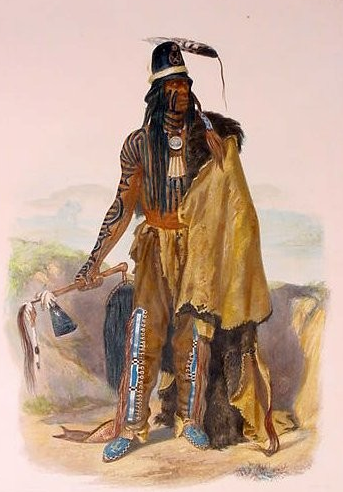
Tracing the Route of the Expedition
Prince Maximilian arrived on 1832, 4th July in Boston 1832 traveled up to New York and Philadelphia. They later traveled to Pittsburgh where they met many fellow countrymen from all professions. The group found a German person staying in Pittsburgh who took them to the village of Economy and it was here that he met George Rapp. The team left for New Harmony and arrived there in October 1832 and actually, they wanted to stay there for just a few days but illness made him stay for the full winter. He made friends with other naturalists Say and Lesueur and during his stay, they made many trips to Wabash and islands such as Turkey Island, Fox Island, and so on. The party hunted birds and animals for food and observation and to collect samples. The party left for St. Louis in 1833 March and went up the great Missouri river for 250 miles. Along the way, they halted at Fort Clark in North Dakota where the Prince lived with the Minatare and Mandan Indians. Maximillian and Bodmer studied various customs of the Indians and recorded various ceremonies and dances that are a part of Indian life such as the O-kee-pa, Bison Dance, Scalp Dance, and others. Bodmer painted many scenes and watercolors of the Indians. They then traveled to Fort McKenzie in Montana and this was the last westward stop. Here he studied the Blackfoot Indians and again recorded the details of their life, how they lived and hunted, marriage and death ceremonies, coming of age, the warrior’s way of life, and other incidents. The Prince wanted to continue his westward journey but there was an outbreak of war between the Indian tribes, that was painted by Bodmer and he was forced to return. The expedition retraced the route they had come and spent two days in New Harmony in 1834 June. They traveled to New York and finally caught a ship back to Europe and reached their hometown in July 1834.
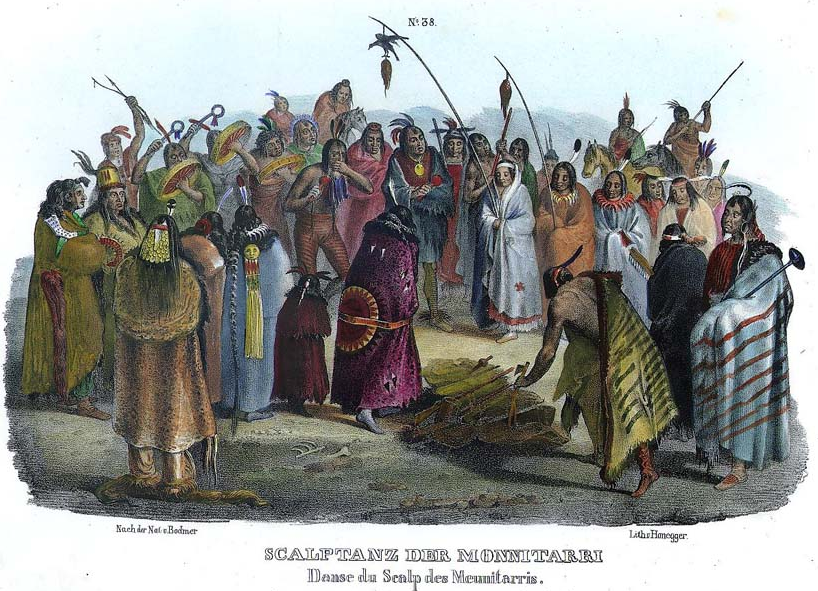
Some accounts of the Expedition
Maximilian and Bodmer were privileged to see the West in all its pristine glory, before the successive waves of settlers irrevocably altered the face of the land and, sadly, the way of life of its original inhabitants forever. At the time of Maximilian’s expedition, the vast herds of buffalo and other game still roamed the prairies, great flocks of fowl filled the skies during migratory seasons, and Missouri itself flowed wild and unchecked by dams from the Rockies to the Mississippi. Although by the 1830s the Indians on Upper Missouri had already been in contact with the fur trappers and traders since Lewis and Clark first opened the country to the white man in the first decade of the century, the intrusion of European culture had not yet effected dramatic changes in the social customs or religious beliefs of the Plains Indians.
Dependence on trade goods had only just begun to modify their traditional creativity and craftsmanship.
Thus, the report compiled by Maximilian and Bodmer is invaluable, not only to ethnologists and historians but to anyone interested in the history of the American West. The narrative and pictorial material that forms the content of this book are drawn from a unique record of Early Western exploration, the Maximilian-Bodmer Collection, which has been in the custody of the Joslyn Art Museum since 1962. The word “unique” has at least two applications to this splendid collection. Maximilian’s text and Bodmer’s paintings are incontestably unique in terms of their level of excellence. Maximilian was a highly educated man for his time, indeed for any time, and he was by far the best-trained scientific observer to explore the West in the early period. Bodmer was easily the most accomplished artist to paint the Plains tribes. To praise his superb draftsmanship and meticulous ethnographic detail is not to belittle the work of the early painters such as Alfred Jacob Miller and George Catlin. Catlin’s accomplishments, in particular, were extraordinary. During six summers, from 1830 through 1836, he ranged the West from the Headwaters of the Mississippi and Upper Missouri south to Texas and the Southwest.
He painted portraits, landscapes, and Indian activities at a furious pace, and before he was through he had chronicled nearly fifty tribes. Catlin had not had the advantage of Bodmer’s European art training and his work was uneven. Bodmer often spent two or three days on a single watercolor, whereas Catlin often painted half a dozen oils in a single day.
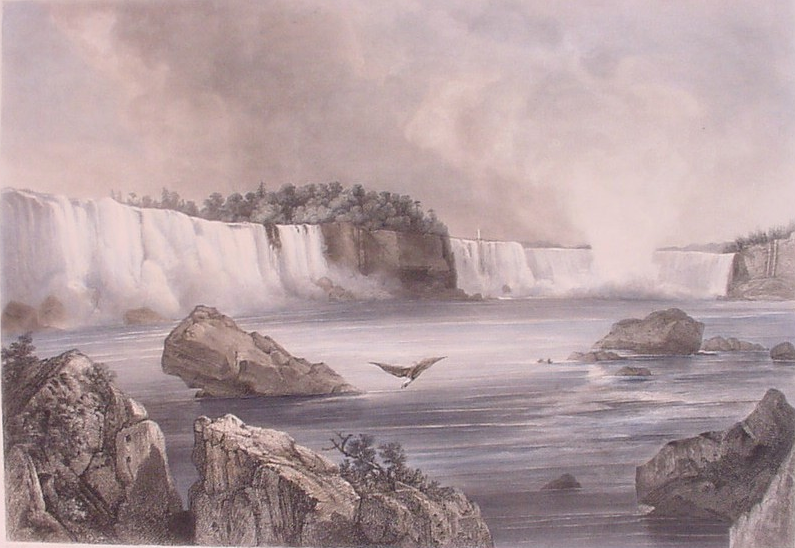
In 1833, accompanied by his faithful servant Dreidoppel and the twenty-three-year-old artist Karl Bodmer, Prince Maximilian steamed 2,000 miles up the Missouri River to Fort Union, and then took a keelboat to Fort McKenzie, the American Fur Company’s advanced outpost among the Blackfeet, near the headwaters of Missouri. At each of the major forts along the way the Prince and his painter stopped to make careful studies of Indian Life, and while at Fort McKenzie he witnessed a surprise attack on the Blackfoot Village by the Assiniboin.
Bodmer managed to capture it on canvas in perhaps the only painting ever made of an Indian battle by an eyewitness.
Like Duke Paul, from whom he received advice before his trip, Maximilian was a serious naturalist who had also explored South America. His field notes indicate that he paid close attention to the description of natural phenomena that he observed, and in some cases, the notes were enhanced by Bodmer’s sketches and those of the Prince himself made right on the spot. The most important ethnological work of Prince Maximilian’s expedition was done during his winter’s stay with the Mandans, who were wiped out by the following year. The Prince’s notes, and Bodmer’s accurate paintings, made from careful pencil sketches, furnish the most complete record of that vanished tribe.
Bodmer’s rendition of the dimly lit interior of a Mandan hut is the only such painting of its kind. They’re the Indian family that sits, surrounded by dogs and horses stabled inside on the fringe of the living quarters. Buffalo robes, baskets, shields, lances, bows and arrows, medicine bags, pipes- all the accouterments of war and peace are represented in Bodmer’s painting, which is thus an important ethnological record.
This painting was accompanied by numerous other drawings and sketches of Mandan’s life. Stimulated by the responsibility of depicting a strange new environment and guided by the erudition and enthusiasm of a high perfectionist employer, Bodmer completed what we now can assess as the most significant body of his life’s work. As we view this rich collection of landscapes, portraits, and scenes of Indian life, we risk today the charge of ingratitude in wishing that the artist’s patron had set a less exacting schedule of required subjects and that Bodmer had devoted more time to picture the everyday life of the expedition (Bodmer, 1839).
Impact of the Expedition
Hunt (1984) points out that when the Prince attempted to publish his findings, he was faced with a far more difficult task. The Prince wrote in German, a language that many readers in Europe could not understand and his aqua color tint books were very expensive and since the works were published in three voluminous only the rich could buy the works. However, the books were eventually translated into English and the translation was done very badly and the final edited work was just one volume. The main gist of the works, the detailed descriptions, and others was not carried over. However, despite all these problems, the book became popular, though not a financial success. The book served as a reference for future scholars and natural historians and ethnographers. Later interest in the book was achieved during 1950 when the original watercolors and lithos were discovered and present-day Americans came to know of the rich legacy that the plains Indians had and that they were not savages but proud cultured people who unfortunately fell victims to the White man’s greed.
Conclusion
The paper has discussed the expeditions of Prince Maximilian of Wied-Neuweid during his travels through America from 1832 to 1833. The explorer was accompanied by an artist, Karl Bodmer who has painted hundreds of sketches and watercolors that captured the essence of the native Indian way of life. Americans in those days were only concerned about land and wealth and did not pay much attention to the native Indians whom they regarded as a nuisance. The work by the Prince offers a very good idea of the customs and traditions of the Plains Indians.
References
BM. 1994. Mountain Sketch: Karl Bodmer Sketchbook, Baltimore Art Library. Web.
Bodmer Karl. 1839. People of the First Man: Life Among the Plains Indians in Their Final Days of Glory Edited By: Davis Thomas and Karin Ronnefeldt, 1976. Second Life Books.
Hunt David C., William J. Orr. 1984. Karl Bodmer’s America. Joslyn Art Museum, Omaha (Nebraska). ISBN 0803211856.
Goetzmann William H. 1994. Exploration and Empire: The Explorer and the Scientist in the Winning of the American West. Texas State Historical Association.
Rumsey David. 2003. Map to illustrate the route of Prince Maximilian of Wied in North America. Maximilian of Wied ; Bodmer, Karl ; Thorn, William, 1839.
Noll Michael G., 2005. Prince Maximilian’s Other Worlds. The Pennsylvania Geographer, Volume 43. pp: 65-83.